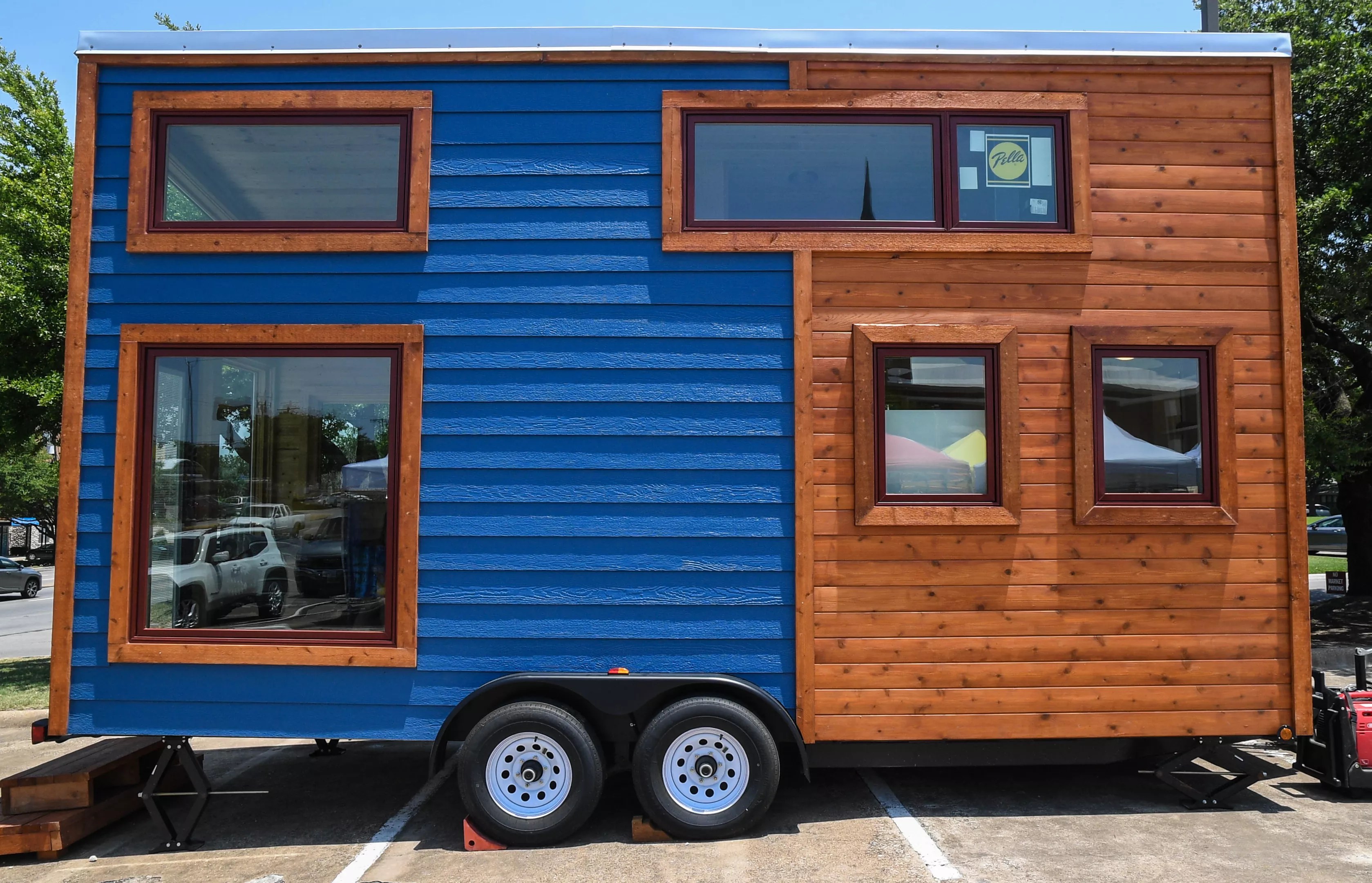
Hannah Ridings

Audio By Carbonatix
Since Terry Lantrip opened his Lake Dallas Tiny Home Village in 2018, the place has been packed. There are 13 lots in the village and almost all of them are occupied. The people who stay there brought or built their own tiny homes and lease the land from Lantrip for about $700 a month.
Lantrip bought an acre in the city of Lake Dallas (about 45 minutes north of Dallas by car) in 2002, and he wasn’t sure what to do with it at the time. The previous owners had asked him not to tear down a farmhouse on the property or mess with vegetation in the area. This limited his options. But over a decade later, he started to realize his vision for the tiny home village. It was in 2016 that he attended Dallas’ annual Earth Day expo, where he saw a variety of tiny homes. (Tiny homes generally are 500 square feet or less. Some are moveable and others are built on permanent foundations.)
That’s around the time he started thinking about creating a tiny village on his property, and he could do it while still abiding by the previous owners’ wishes. In 2018, the Lake Dallas Tiny Home Village opened. Since then, nearly every lot has been occupied and there’s always a waiting list for the next one available.
Lantrip is a real estate investor and the founder of the real estate company Urban-Retro. He owns other properties but this is his only tiny village. With inflation and interest rates on the rise, Lantrip told the Observer, “trying to provide affordable housing is extremely challenging these days.
“Tiny homes provide a way for the residents to purchase their own homes, and to have a sense of homeownership,” he said.
He doesn’t plan to open another tiny village just yet. He said he has too many other projects he’s pursuing. Creating more communities like this could help put a dent in the affordable housing crisis, he said, but the concept is a hard sell.
“There are no cities that are receptive to having the tiny home village in their community that I know of.” – Terry Lantrip, Lake Dallas Tiny Home Village
“There are no cities that are receptive to having the tiny home village in their community that I know of,” he said. “It’s a sad situation because tiny homes are a good solution, easy solutions to help with the affordable housing crisis that we’re having.”
He said Lake Dallas deserves some credit for being open to his village. Others haven’t been, he said, because people think more affordable communities like this will end up being trashy.
“Most people, when they think of tiny homes, they think of, you know, a mobile home park or an RV park. And those have bad connotations, even though there are really nice RV parks, and nice mobile home parks,” Lantrip said. “I think people are concerned that it might become something trashy or undesirable. But our village is very nice. We have professionals that live there. People who work in the teaching field, medical field, insurance. They’re highly educated.”
The city of Dallas has considered tiny homes to help house the homeless. Lantrip said tiny homes for the homeless and his community often get lumped together, but they’re different. For one thing, the homeowners in his village spend between $75,000 and $125,000 to build their houses. Communities of tiny homes for the homeless, which are found in other parts of the country, generally consist of small sheds and have shared spaces such as communal bathrooms and kitchens.
According to NPR, there’s a range of quality in tiny homes for the homeless. Some are more like cabins with just a cot and a heater. Others are miniature houses with kitchens and bathrooms.
Lantrip thinks there are likely better ways to house the homeless than to buy or build each person a $75,000-$125,000 home, but homelessness is not his area of expertise.
Dallas is also considering something called micro apartments. In January, Dallas’ City Plan Commission unanimously approved a 72-unit apartment development at 4615 Willow St. that will have homes ranging from 350 to 800 square feet, according to The Dallas Morning News. The developers say they want to charge at or below the average rent for the area, which is about $1,349-$1,984 a month, according to rent.com. The project has yet to be approved by the City Council.
After Lake Dallas approved his project, Lantrip figured the place would get its 15 minutes of fame. About five years later, the project is still getting publicity. It was recently featured in a story by Business Insider.
Asked why he thinks interest in his project has lasted so long, Lantrip attributed it to the growing housing affordability crisis.
“I think it’s a matter of homes now are so expensive, that the affordability factor is out of the reach of many, many people,” Lantrip said. “So we’re going to have to try to figure out how we’re going to house people in the future. Actually, we need to figure it out now because we’ve got people that are needing a place to live, and so we’ve got to figure out something that people can afford.”